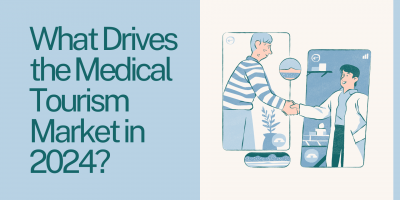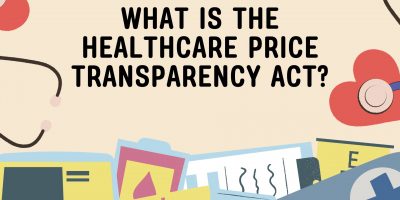
The Price & State of Women’s Health
Despite the progress, women have unique health needs beyond reproductive and maternal care, and not all of them are met.

Cardiovascular disease (CVD) can be deadly, costly, and tenacious.
In fact, the American Heart Association estimates that by 2035 up to 45% of U.S. adults will live with cardiovascular disease, increasing healthcare costs to more than a trillion dollars.
For years this condition has been a notorious silent killer in the United States. Even more concerning is that, after a steady decline, CVD is on the rise again. Now, more than ever, it’s crucial to address the issue and devise solutions to mitigate its consequences.
Since it affects all aspects of people’s lives, it’s also an obligation for employers who want a healthy and productive workforce. Thus, one of the solutions to try to reduce cardiovascular disease is disease prevention programs in the workplace. It’s a way to take control of CVD and ensure employees have a better chance against this disease.
The American Heart Disease Association 2022 report reveals that, in 2020, more than 19 million deaths were attributed to CVD globally.
According to the latest data from the Centers for Disease Control and Prevention’s (CDC) National Center for Health Statistics, heart disease remains the number one killer in the United States, with a 3.3% increase in mortality rate between 2020 and 2021. The attempts to contain this disease and the significant healthcare progress are slowly regressing as of recent years.
Between 2000 and 2011, the U.S. heart-related mortality rate declined by 3.7% annually. Ultimately, in 2015 the CDC reported the first increase of almost 1% in decades since 1969.
At present, the risk of cardiovascular disease is growing faster than the capacity to fight back.
One way to tackle the issue, particularly in the workplace, is to provide employees with resources and programs to reduce the risk factors for heart disease and stroke.
The main risk factors for heart disease and stroke that need to be identified and addressed are:
Since it’s such a perplexing issue, preventing CVD should be at the forefront of healthcare priorities. With that in mind, this Shortlister article explores how disease prevention programs try to reduce cardiovascular disease by analyzing their importance in the workplace.

As the name suggests, disease prevention programs are specific strategies and efforts to prevent the development or reduce the severity of chronic diseases and morbidities, including CVD. The definition is broad since these preventative efforts range from awareness campaigns to federal laws.
For example, one report, “Cardiovascular effect of bans on smoking in public places: a systematic review and meta-analysis,” reveals that after ban implementations, the risk of heart attack decreased by 17%. The effect was especially noticeable among younger people and non-smokers.
Overall, there are three prevention methods:
Regarding the workplace, disease prevention programs are employers’ initiatives to improve workers’ well-being through different benefits packages. These employee programs usually focus on primary and secondary prevention. Although they are individual to every business, the need for some form of heart disease prevention is universal.
One in four people dies of cardiovascular disease, reports the CDC.
Furthermore, the economic burden of health care services, medications, and premature death of CVD is $219 billion annually. This number is set to grow even more in the next decade.
But the tricky part about this disease is that cardiovascular risk factors take years to manifest. There’s no way of being 100% certain when and how they’ll show.
Take, for instance, obesity and diabetes.
The growing incidence of type 2 diabetes in children and adults is closely related to the obesity epidemic. However, it’s difficult to pinpoint the exact time the disease will manifest or if it will in the first place. One research published on PLOS Medicine shows that the duration of obesity can impact the likelihood of developing a health issue.
But that’s only one factor.
Overall, we can’t determine the how and the when. However, once it happens, it’s more complicated or impossible to reverse the effects of heart disease or its risk factors.
Several years back, the President of the American Heart Association, Dr. Steven Houser, for CNBC, said that the future of CVD research is to stop the disease before it starts.
For Houser, a better way would be to understand how people can become motivated to maintain a healthy lifestyle, despite socioeconomic struggles. He predicted this “priority switch” to happen in the next decade.
Although we still have a long way to go, it’s more evident now that progress lies in prevention rather than a cure.
That raises a question – how do disease prevention programs reduce cardiovascular disease? One way to answer it is by saying they tackle the correct issues and support lifestyle changes.
Overall, they tackle two main criteria for CVD, or the following:
There are many different support programs across the U.S. For example, the CDC supports heart disease prevention programs throughout all U.S. states. They aim to cut risk factors and reduce health disparities within health departments.
Milltown Hearts 2022 initiative is one example of a heart attack and stroke prevention program. They tackle the problem by implementing the ACBS principle, or aspirin as appropriate, blood pressure control, cholesterol management, and smoking cessation.
Another case in point is the Well-Integrated Screening and Evaluation for Women Across the Nation (WISEWOMAN) program. It targets women between the ages of 40 to 64 with no or low insurance and a low income. The program offers screenings and health counseling, among other resources, promoting healthier behavior.

State and local preventative programs greatly aid the fight against CVD. However, this is just one way of addressing the issue.
Properly implemented employee programs with cardiovascular disease prevention measures could be just as efficient and are more than necessary.
Take for example U.K. study “Heart Disease and Work” by Anne E Price examines the close correlation between CVD and the workplace. The findings reveal that a record number of people reported work-related illnesses or felt like their workplace causes or contributes to their bad health. Additionally, employees reported higher levels of absenteeism. Or, for those with work-related cardiovascular disease, the sick days averaged around 23 annually.
The study also found that specific workplace hazards aggravate or cause CVD, including:
Despite improved working conditions and reduced workplace hazards, the CVD risk remains, especially in the aging workplace.
Nowadays, employment uncertainty, work overload, and overall employee stress significantly contribute to CVD.
Employers should implement disease management programs to prevent cardiovascular disease in the workplace or try and reduce the consequences. From cardiovascular health programs to mental well-being benefits, there’s an abundance of ways companies can invest in and support their workers’ health.
The workforce is aging, and stress is rising.
A combination of these two factors can increase the chances of heart disease. In fact, according to a 2017 report, “Heart Disease and Stroke Prevention: Workplace Health in the United States,” CVD risk increases with age. While at age 24, the risk is 20%. At 45 is 50%. For employees aged 65, the risk is a staggering 80%. Equally important is that many of these people, even those above 55, are employed.
Beyond the health risk, cardiovascular disease also poses an organizational risk.
From increased absenteeism to higher employer healthcare costs, companies face many challenges when disregarding their employees’ health. The report also shows that less than half of employers offered some type of health promotion program. That’s a devastating number, considering the severity of this silent killer.
The research clearly shows a gap between what employees need regarding their health and what they get. Or, more precisely, what they don’t get. Thus, investing in the employees’ wellness in the workplace is necessary and requires a thorough understanding of the employee’s health priorities.
The following are common employer strategies on how to prevent cardiovascular disease in the workplace.
Before turning to other solutions, companies should consider investing in cardiovascular health programs in the workplace. This is especially important if their workforce demographic comprises high-risk individuals for CVD.
Overall, these employee programs offer targeted solutions that focus on heart disease prevention.
Physical inactivity is a direct risk factor for heart health.
In fact, according to the British Heart Foundation, physical activity reduces the risk of developing heart disease by up to 35%. Therefore, employee benefits that promote physical activity, like corporate fitness, gym memberships, and onsite fitness programs or facilities, can reduce the effects of sedentary jobs.
Mental wellness in the workplace is just as important as physical health. Chronic stress increases blood pressure, a risk factor for CVD. Longer exposures to a stressful environment could cause heart trouble. The American Heart Association reports that two out of three employees consider their work a significant stress source.
To tackle the issue and create a workplace culture around mental wellness, companies should offer their employees a range of wellness benefits, including holistic ones like mindfulness and meditation.
There’s no doubt that tobacco use can harm the body. Numerous studies have confirmed this over the years. However, as a major factor for heart disease, smoking is responsible for 25% of deaths caused by CVD. The risk increases with the number of cigarettes per day and the longer a person continues to smoke. Even exposure to secondhand smoke is dangerous.
Thus, workplace tobacco cessation programs can help smokers and non-smokers improve their health.
As menial as it sounds, many workers still don’t have access to healthy food in their workplace. Yet, poor nutrition is directly linked to many heart health problems.
Making healthy living accessible is possible through nutrition programs that offer employees healthy and balanced meals. In fact, this not only reduces CVD risk but can benefit their overall health.
Some of the ways companies can do this are through catering services or providing nutritional snacks regularly.
Implementing disease prevention programs at the workplace requires organization and attentiveness across all departments. The process is more complicated than introducing a workplace benefit and expecting it to work.
A successful disease prevention program is carefully selected and implemented. What works for one company might not for another.
Thus, with the help of managers and HR, the employer should assess what employees need regarding their health and well-being.
It takes four steps to do that:
One question echos across medical circles and public health domains: are heart disease prevention programs successful?
As research and real-world experiences demonstrate, well-structured and comprehensive cardiovascular disease prevention programs, integrating education, risk assessment, lifestyle interventions, and policy changes, exhibit substantial success rates.
Their impact not only enhances individual well-being but also contributes to a broader societal health improvement, highlighting the vital role of such programs in mitigating the burden of heart disease.
Elements of a successful disease prevention initiative focused on cardiovascular health include:
In summary, the journey toward effective heart disease prevention programs is marked by integrating these crucial components.

CVD risk is rising, but that doesn’t mean it can’t be prevented.
Studies show that preliminary treatment and awareness are effective, which is how disease prevention programs try to reduce cardiovascular disease.
A healthy workforce represents a healthy society and vice versa. Since these two are not mutually exclusive, it’s paramount for cardiovascular disease prevention to find its place in the workplace.
From cardiovascular health programs to perks like healthy snacks or gym memberships, companies could do a lot more to increase heart health and contribute to healthy and happy employees.
Disclosure: Some of the products featured in this blog post may come from our partners who compensate us. This might influence the selection of products we feature and their placement and presentation on the page. However, it does not impact our evaluations; our opinions are our own. The information provided in this post is for general informational purposes only.
Content Writer at Shortlister
Senior Content Writer at Shortlister
Browse our curated list of vendors to find the best solution for your needs.
Subscribe to our newsletter for the latest trends, expert tips, and workplace insights!

Despite the progress, women have unique health needs beyond reproductive and maternal care, and not all of them are met.

What compels someone to travel halfway around the world for a hip replacement or cancer therapy?

If two different people with the same prescription medicine get two different bills for the same medicine, it makes you wonder – how is the price of the prescription medicine determined?

Imagine knowing the exact cost of your healthcare services upfront. The Healthcare Price Transparency Act promises just that.
Used by most of the top employee benefits consultants in the US, Shortlister is where you can find, research and select HR and benefits vendors for your clients.
Shortlister helps you reach your ideal prospects. Claim your free account to control your message and receive employer, consultant and health plan leads.